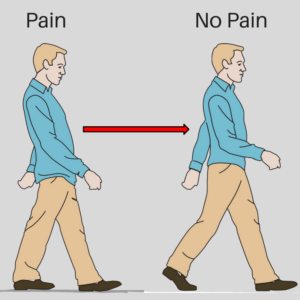 Walking is fundamental. It is also one of life’s unconscious actions we are designed to take for granted.
Walking is fundamental. It is also one of life’s unconscious actions we are designed to take for granted.
I walk; therefore, I walk correctly, which is deeply ingrained into our psyche— is a deeply flawed concept.
“Who taught you how to walk?” is a question I ask my clients, and attendees, at workshops.
This is usually met with blank stares, a shrug of the shoulders, or the occasional “Ballet teacher”.
The truth is, unless you went to finishing school, no one taught you how to walk. Somewhere around one year old you stood up, crept around while holding onto furniture for a few weeks or months, and then took a couple of steps to the cheers of your parents—if they happened to notice.
After that, you are left to your own devices.
You learn to walk by imitating your parents (though no one taught them how to walk) and they learn by imitating their parents—who also weren’t taught how to walk.
And your parents invariably had accidents and injuries that changed the way they walked over time so you end up with a walk built on patterns that were less than ideal.
For some, this isn’t a problem because in the same way that a select few people can smoke cigarettes, drink too much, and live to a ripe old age of 95; some of you can walk and stand poorly for your whole life and get away with it.
But not everyone can walk poorly and make it work forever.
You can get away with poor movement patterns if you’re lucky. If you go through life without any injuries, accidents, or congenital issues such as spine or joint problems then you’re good to go—walk the way you always have with no issues.
For many people though, something happens to make walking improperly actually cause harm.
It could be a childhood injury that didn’t heal as well as it could have, or a fall that happens later in life, or, like I mentioned before, it can be some type of spinal problem such as stenosis or degenerative disc disease.
Whatever the source aches and pains arrive that won’t seem to leave or they heal and come back repeatedly. And often, you don’t even know why.
Or you could have a lifetime of activity unhampered by pain but then the years of sitting poorly at a desk or driving a long-distance commute every day starts catching up—and sciatic or other type of pain becomes an unpleasant acquaintance that won’t seem to give you a break.
If any of the scenarios apply to you it’s time to start paying attention to the way you walk. Learning to walk correctly can have far-reaching benefits that allow you to heal, age gracefully, and live the active lifestyle you thought you might never get back.
I have been teaching people to walk for pain relief for over ten years and people still think I am joking sometimes when I tell them what I do.
However, once I show them how they walk or stand poorly—and what it feels like to move and stand well—they are no longer laughing.
Changing how you walk isn’t hard but it requires conscious effort and repetition. The positive payoff is huge: move with less pain, wake up with more energy, and enjoy life fully!
The CoreWalking Program addresses your movement patterns in the simplest way showing you how to get the most out of life. Change your walk and you can profoundly change your life.
